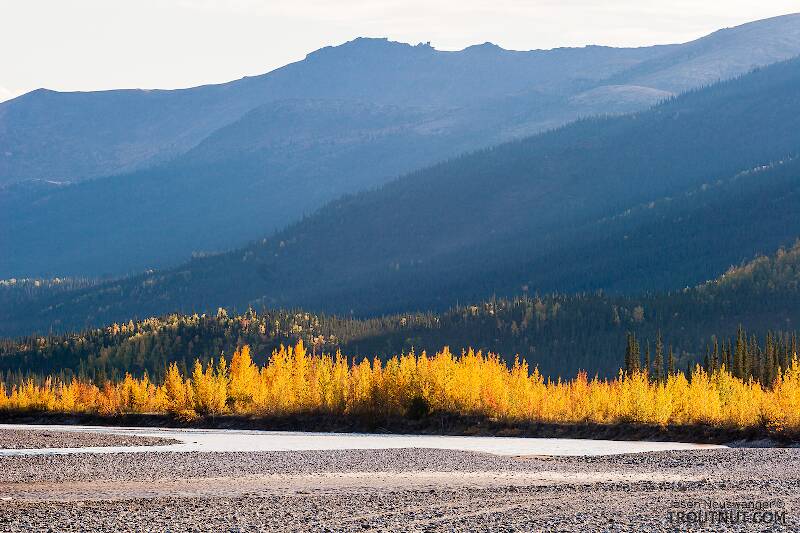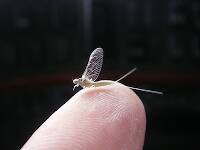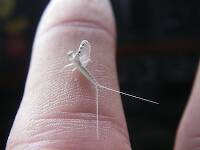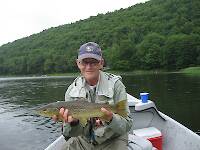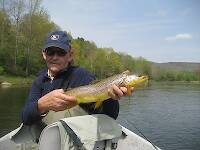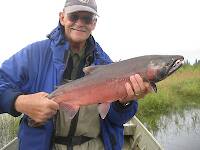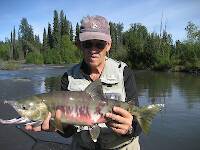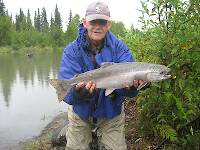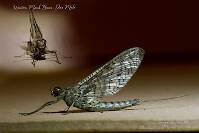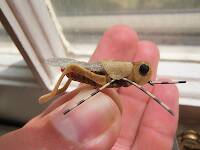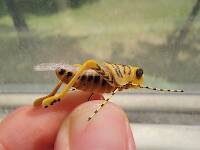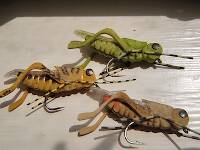
Hex Mayflies
Hexagenia limbata
The famous nocturnal Hex hatch of the Midwest (and a few other lucky locations) stirs to the surface mythically large brown trout that only touch streamers for the rest of the year.
Featured on the forum

I was not fishing, but happened to be at an unrelated social event on a hill above this tiny creek (which I never even saw) when this stonefly flew by me. I assume it came from there. Some key characteristics are tricky to follow, but process of elimination ultimately led me to Sweltsa borealis. It is reassuringly similar to this specimen posted by Bob Newell years ago. It is also so strikingly similar to this nymph from the same river system that I'm comfortable identifying that nymph from this adult. I was especially pleased with the closeup photo of four mites parasitizing this one.

Troutnut is a project started in 2003 by salmonid ecologist Jason "Troutnut" Neuswanger to help anglers and
fly tyers unabashedly embrace the entomological side of the sport. Learn more about Troutnut or
support the project for an enhanced experience here.
By Troutnut on July 29th, 2020
I started fishing around 11:00 am to some difficult risers near camp, then worked my way upstream. In total for the day, I only caught 5 big fish (16–19") and one small one, but the big ones were all different and memorable:
1. I caught one fish by precision sight nymphing from above and behind it, close on a high cut bank.
2. I caught one that was cruising a very shallow, sunny, slow-moving tailout using a bonefish-style lead/cast/strip of a nymph in front of the fish's path.
3. A rising cruiser patrolling a deep pool tail took a caddis pupa dry, before it had started sinking.
4. I cast across a backbar channel and part of a gravel bar to a fish feeding up off the bottom of a shallow gravel bar, using a Galloup's pheasant tail nymph just below the surface.
5. While resting for a snack on a high bank over a pool, I saw one huge swirl from a fish chasing something. I cast a streamer and a nice fish slammed it. That was the only streamer action all day except for a few lazy follows.
I hooked and lost many nice fish throughout the day, more than twice the number I landed. Fish were generally not very active, and I had to work hard and get creative for every strike. There was lots of action on dry flies, mostly tiny, but I didn't land many fish on those. The most memorable lost fish was a big one from a high cut bank, below which was a submerged, undercut clay shelf. I hooked the fish, but there was no way to alnd it except by horsing it upstream 20 yards, which wasn't happening on a size 20 dry with a 6X tippet. I also broke one off on 7X while screwing around trying to fetch my net and camera after hooking the fish during a snack break.
Hatches were sparse. There were sporadic yellow sallies and some small (size 18), yellow-bodied Heptageniid mayfly duns. A few caddis and craneflies were around. The water temperature peaked at 65 degrees.
1. I caught one fish by precision sight nymphing from above and behind it, close on a high cut bank.
2. I caught one that was cruising a very shallow, sunny, slow-moving tailout using a bonefish-style lead/cast/strip of a nymph in front of the fish's path.
3. A rising cruiser patrolling a deep pool tail took a caddis pupa dry, before it had started sinking.
4. I cast across a backbar channel and part of a gravel bar to a fish feeding up off the bottom of a shallow gravel bar, using a Galloup's pheasant tail nymph just below the surface.
5. While resting for a snack on a high bank over a pool, I saw one huge swirl from a fish chasing something. I cast a streamer and a nice fish slammed it. That was the only streamer action all day except for a few lazy follows.
I hooked and lost many nice fish throughout the day, more than twice the number I landed. Fish were generally not very active, and I had to work hard and get creative for every strike. There was lots of action on dry flies, mostly tiny, but I didn't land many fish on those. The most memorable lost fish was a big one from a high cut bank, below which was a submerged, undercut clay shelf. I hooked the fish, but there was no way to alnd it except by horsing it upstream 20 yards, which wasn't happening on a size 20 dry with a 6X tippet. I also broke one off on 7X while screwing around trying to fetch my net and camera after hooking the fish during a snack break.
Hatches were sparse. There were sporadic yellow sallies and some small (size 18), yellow-bodied Heptageniid mayfly duns. A few caddis and craneflies were around. The water temperature peaked at 65 degrees.
Photos by Troutnut from Slough Creek in Wyoming
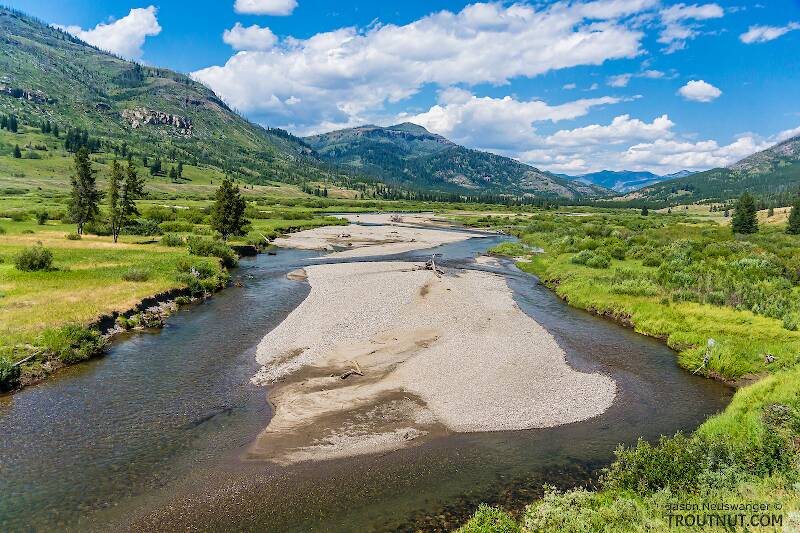
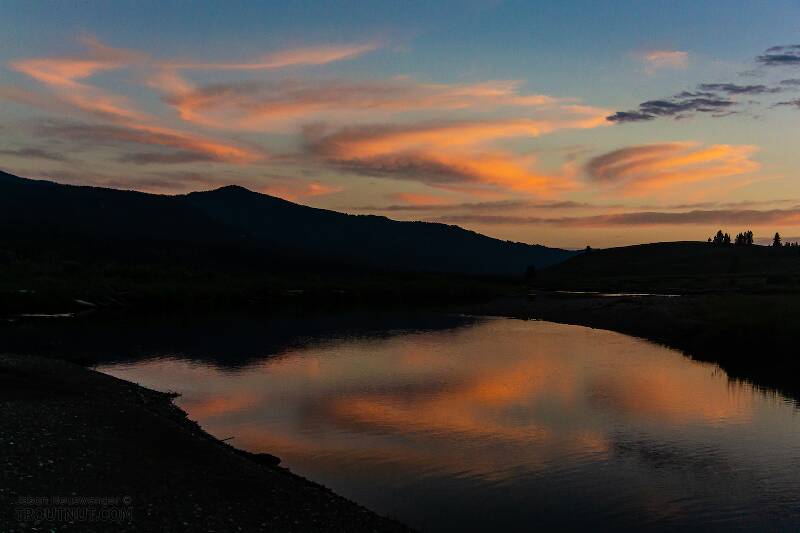
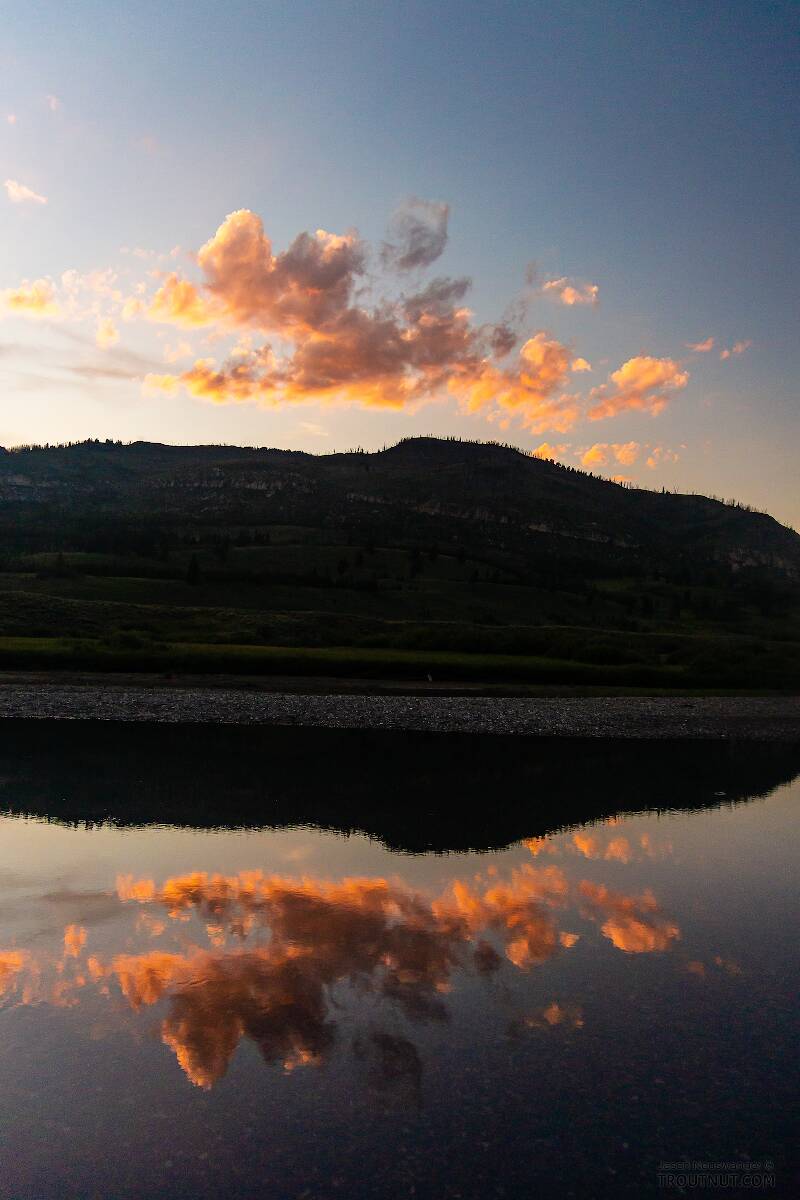
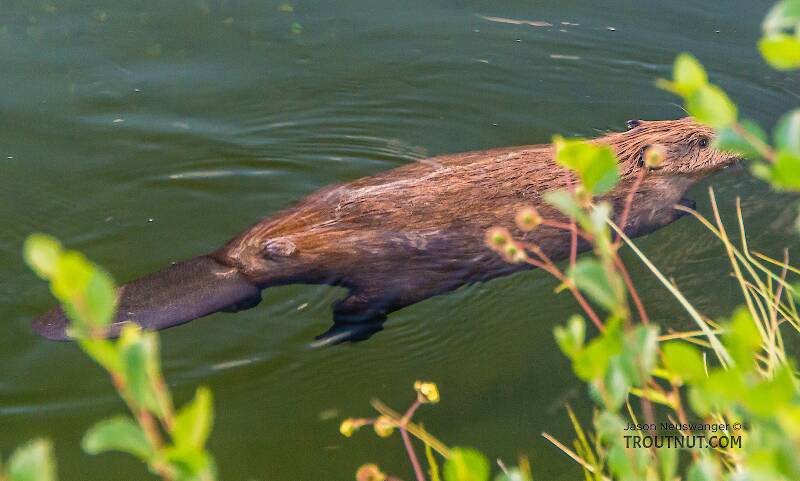
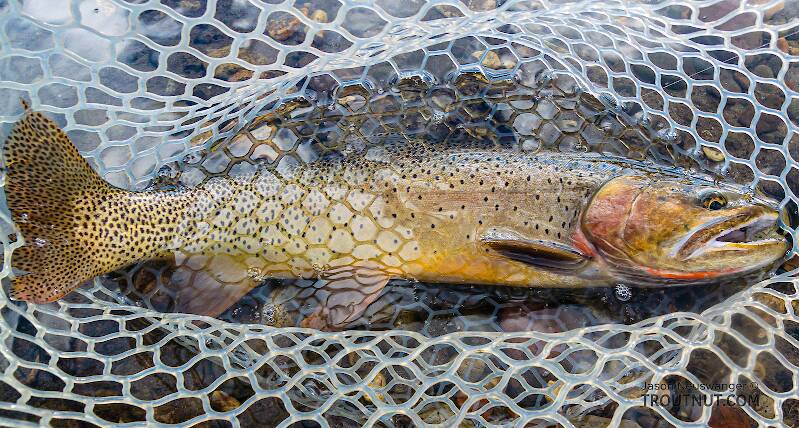
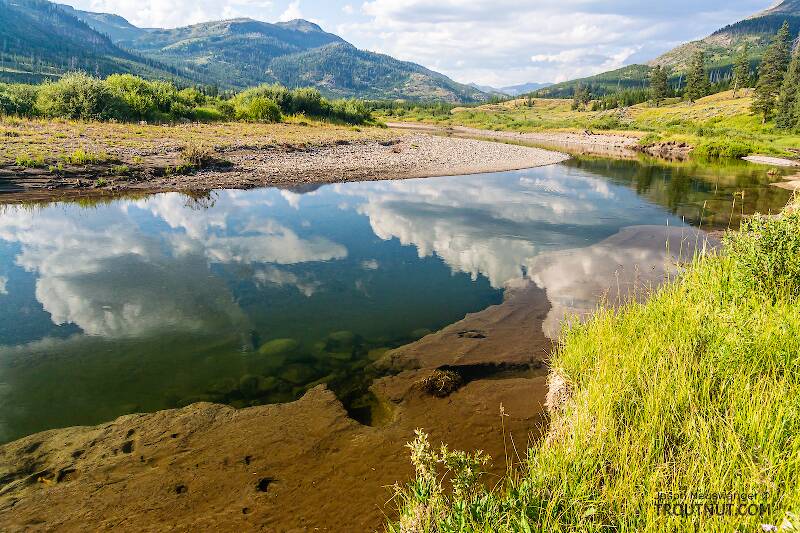
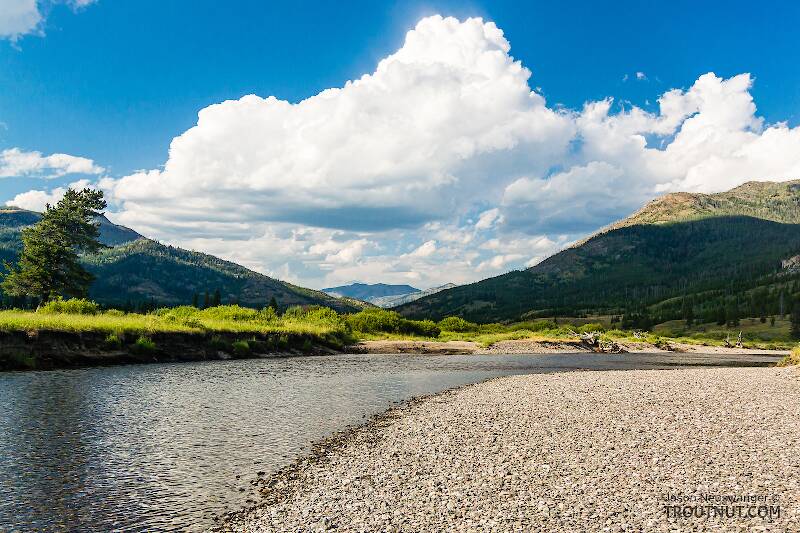
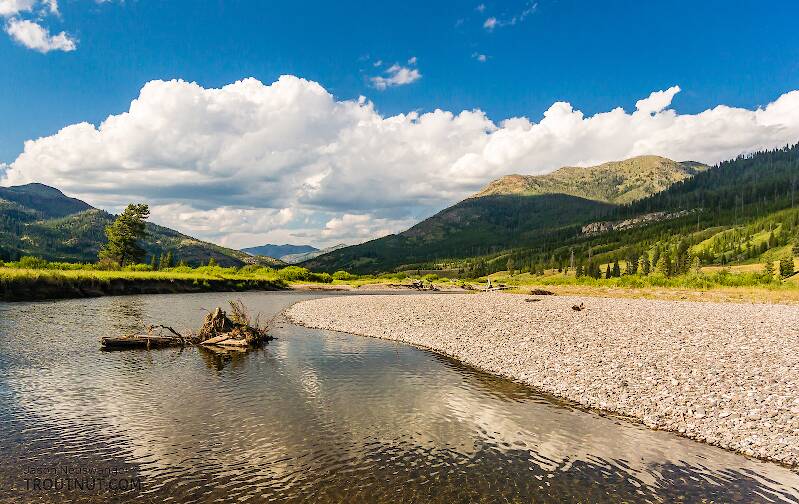
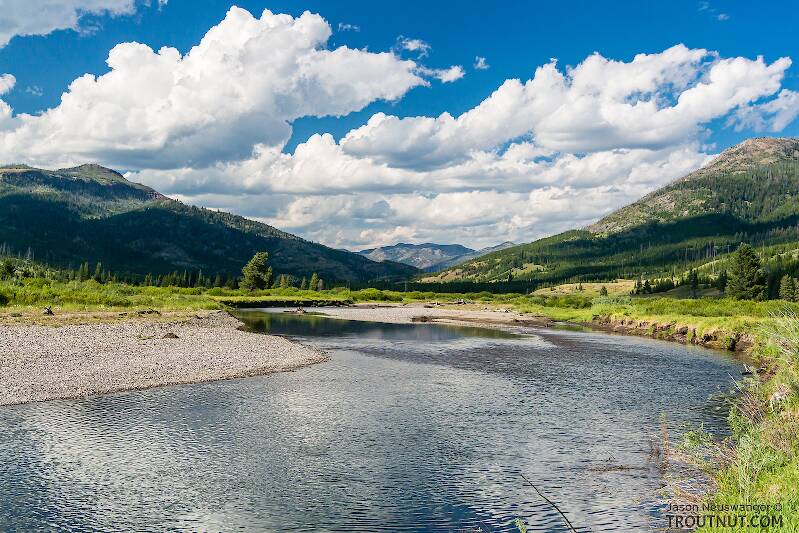
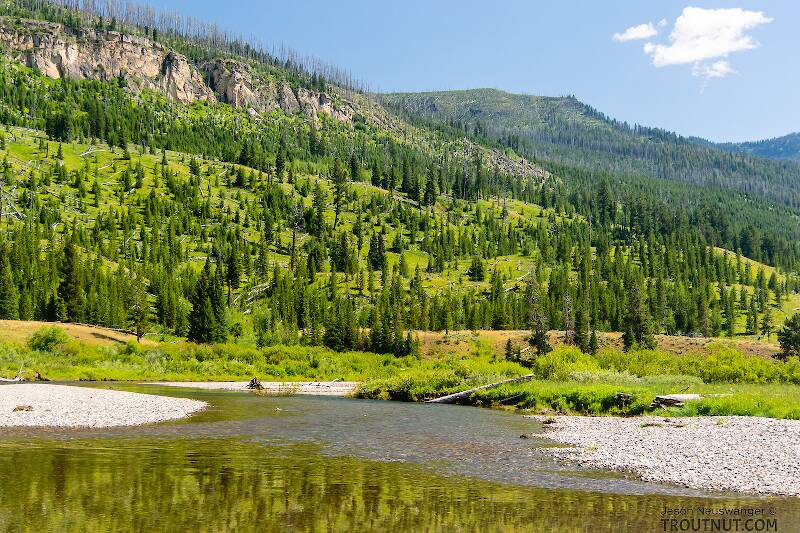
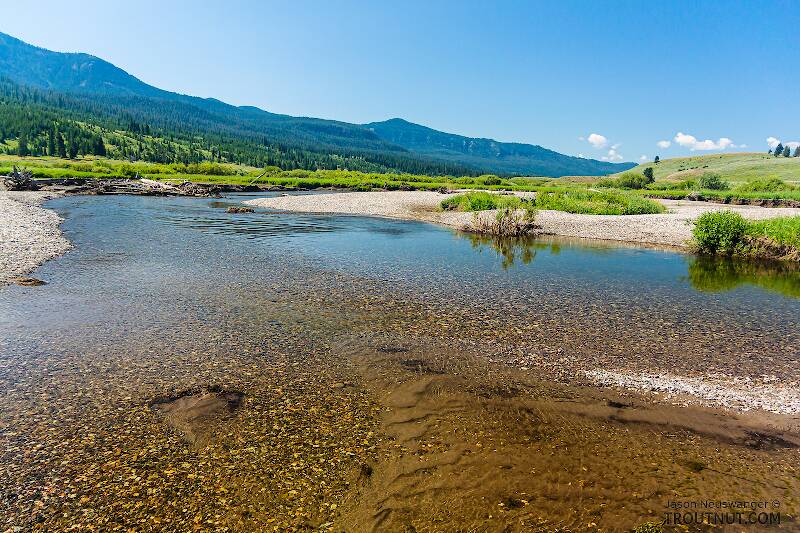
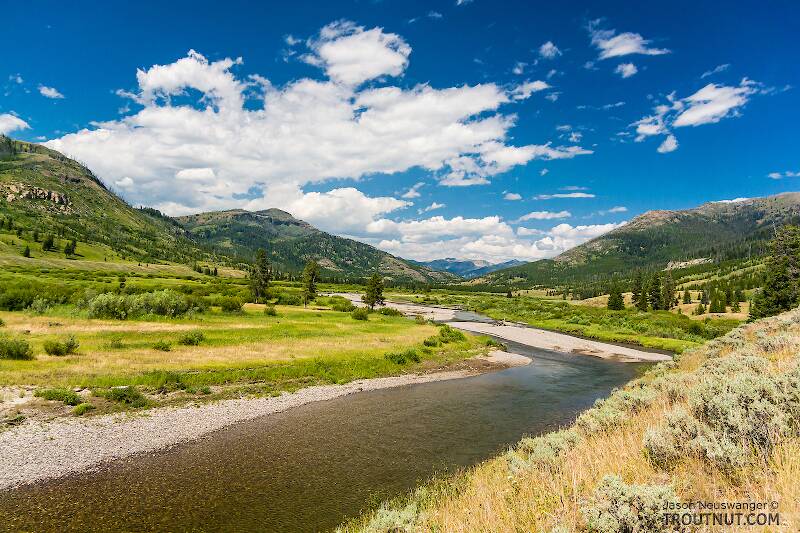
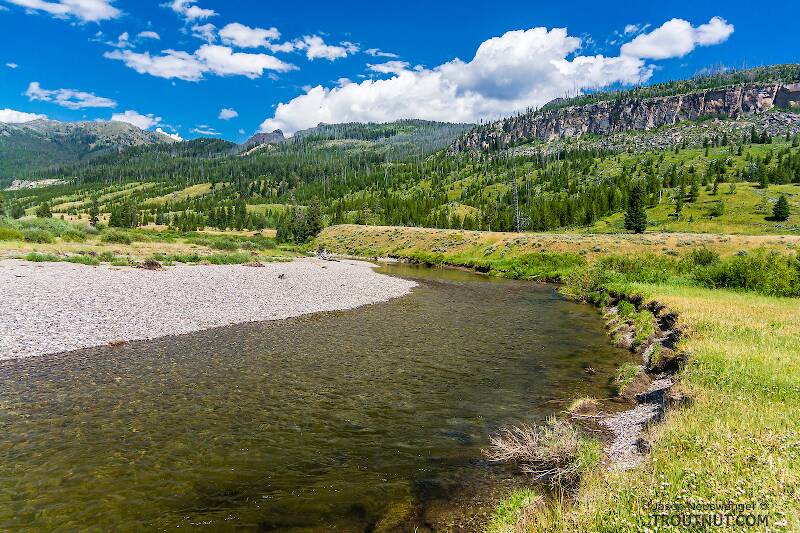
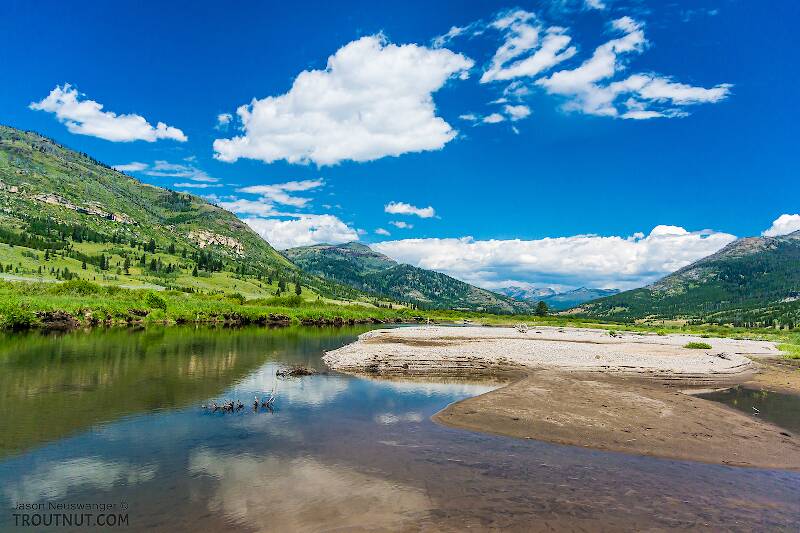
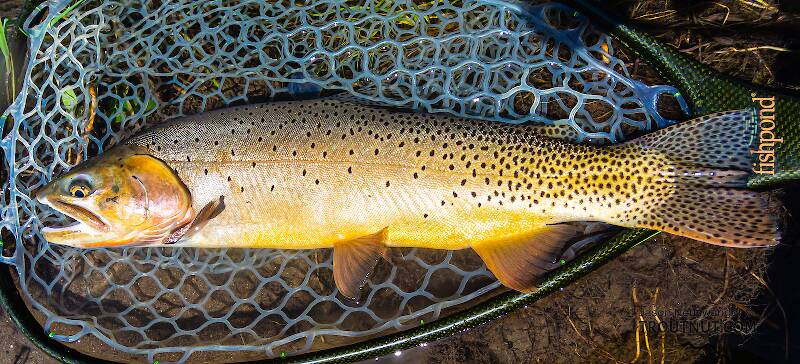
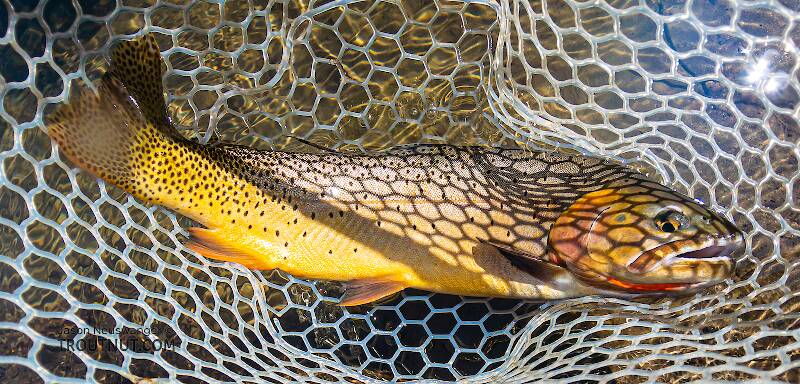
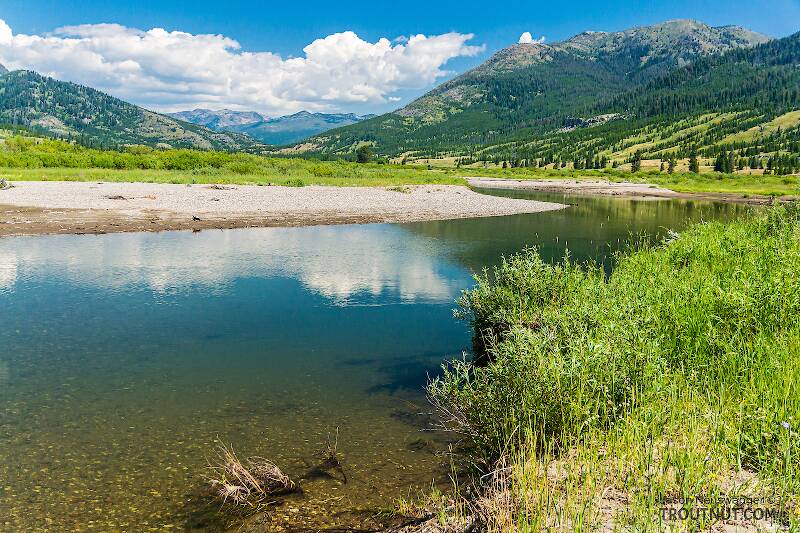
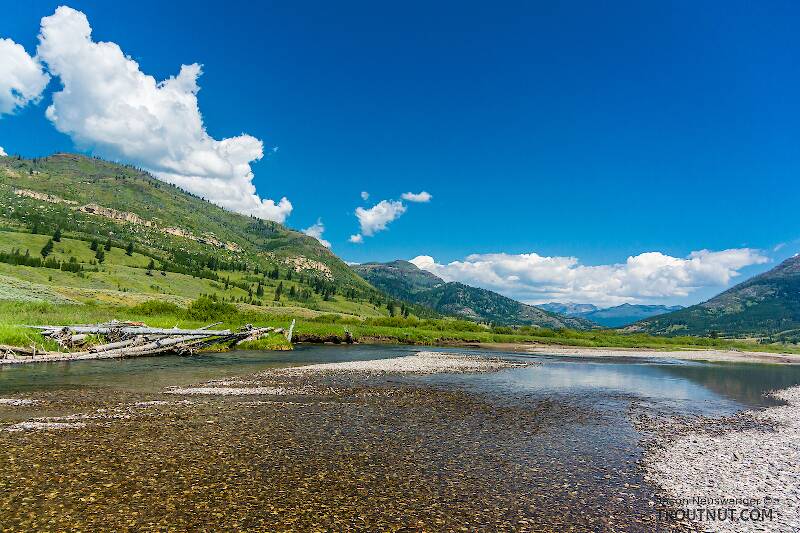
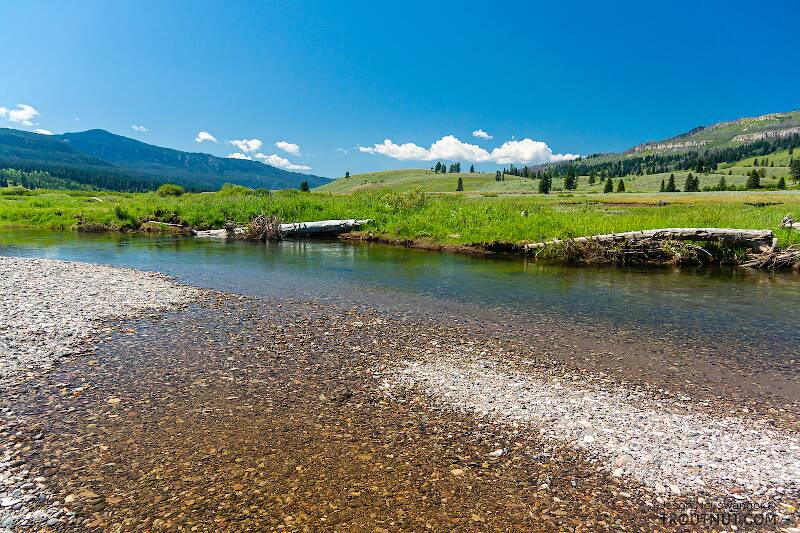
Quick Reply
Related Discussions
Topic
Replies
Last Reply
10
Jul 27, 2008
by Phillyfired
by Phillyfired
0
Jan 7, 2021
by Coha
by Coha
2
Apr 10, 2020
by Partsman
by Partsman
0
Jun 29, 2020
by Wiflyfisher
by Wiflyfisher

